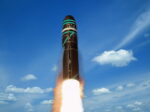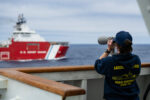Russia has completed the second prototype of its upgraded Yak-130M combat trainer aircraft—a key milestone in the modernization of its advanced jet training fleet. Designed to bridge the gap between basic flight instruction and frontline fighter operations, the Yak-130M introduces enhanced avionics and potential light attack capabilities tailored for future Russian Air Force requirements.
Yak-130M: Evolution of a Versatile Training Platform
The Yakovlev Yak-130 is a subsonic twin-engine advanced jet trainer originally developed jointly by Russia’s Yakovlev Design Bureau (now part of United Aircraft Corporation) and Italy’s Aermacchi in the 1990s. Following their split in 2000, Russia continued development independently. The base model entered service with the Russian Aerospace Forces (VKS) in 2010 and has since been exported to countries including Algeria, Bangladesh, Belarus, Laos, Myanmar, and Vietnam.
The new “M” variant represents a significant upgrade over earlier versions. While retaining its core function as an advanced trainer capable of simulating fourth-generation fighter characteristics—including high angle-of-attack maneuvers and supersonic-style cockpit ergonomics—the Yak-130M is being tailored for secondary light attack roles. According to Russian defense sources cited by TASS and Aviaport.ru in late 2023 and early 2024, the M-model includes updated avionics architecture compatible with modern weapon systems and improved survivability features.
Second Prototype Completion Signals Progress Toward Serial Production
The completion of the second prototype was announced by Irkut Corporation (a UAC subsidiary) in October 2025 at its production facility in Irkutsk. This follows the rollout of the first prototype in mid-2023. The new airframe will reportedly join ongoing flight testing aimed at validating enhancements introduced under the M-standard upgrade program.
While official specifications remain limited, available imagery suggests minor structural changes to accommodate new mission systems. Reports also indicate integration trials with guided munitions are underway—potentially including laser-guided bombs (KAB-series), air-to-ground missiles like Kh-25ML or Kh-38 variants, and precision unguided rocket pods compatible with SVP-series targeting systems.
This development aligns with broader Russian efforts to increase operational flexibility across its tactical aviation fleet amid sustained attrition from ongoing operations in Ukraine. The Yak-130M could serve as a cost-effective platform for pilot training while doubling as a counterinsurgency or border security asset for low-intensity missions.
Avionics Overhaul and Combat Capability Enhancements
The most significant upgrades on the Yak-130M are believed to be internal rather than aerodynamic. Sources close to UAC suggest that the M-model incorporates an open architecture digital avionics suite designed to support both Western-style glass cockpit interfaces and expanded weapon system integration.
- Radar/EO Integration: While earlier versions lacked onboard radar systems due to their training focus, there are indications that an AESA or mechanically scanned radar option may be included on export or light attack variants.
- Helmet-Mounted Cueing: Compatibility with helmet-mounted displays (HMDs) is expected—improving target acquisition during air-to-ground missions.
- Datalinks & EW Systems: Upgraded datalink capability could allow networked operations with UAVs or other manned platforms; defensive aids suites may include radar warning receivers (RWRs) or flare/chaff dispensers.
- Cockpit Ergonomics: Full HOTAS controls remain standard; multifunction displays have likely been upgraded for better sensor fusion training scenarios.
If confirmed operationally viable as a strike-capable platform under current VKS doctrine, this would place it alongside other dual-role trainers like Korea’s FA-50 or China’s L-15B—albeit at lower cost thresholds.
Tactical Role Amidst Shifting Operational Needs
The renewed emphasis on multi-role trainers reflects Russia’s need to optimize force structure under budget constraints while maintaining pilot throughput. With heavy attrition among Su-25s and limited availability of Su-34s/Su-30SMs for routine CAS missions due to their high operating costs and maintenance demands during wartime deployments in Ukraine and Syria, lighter assets like an armed Yak-130 could fill critical gaps.
The aircraft’s ability to operate from semi-prepared runways using rugged landing gear also makes it suitable for forward-deployed operations near contested zones—a factor increasingly relevant given Russia’s evolving expeditionary posture across Central Asia and Africa through Wagner-aligned PMCs or bilateral defense agreements.
Export Prospects Remain Strong Despite Sanctions
Despite Western sanctions targeting Russia’s aerospace sector since early 2022—including restrictions on microelectronics vital for avionics production—the Yak family continues to attract interest from non-aligned states seeking affordable yet capable platforms outside NATO supply chains. Algeria recently expressed interest in expanding its existing fleet with upgraded variants pending successful trials of the M-model configuration.
Furthermore, Rosoboronexport has actively promoted armed versions of the Yak series at recent defense expos such as MAKS (Russia), LIMA (Malaysia), and Army Forum events—highlighting modularity that allows tailoring configurations based on customer needs ranging from pure trainers to ISR/light attack hybrids equipped with EO/IR pods or synthetic aperture radars (SAR).
Outlook: From Prototype Toward Operational Integration
If testing proceeds according to schedule through late 2025 into early-mid 2026—and assuming no major delays due to component shortages—the VKS may begin receiving initial serial-production units by late next year under a limited procurement batch focused on replacing aging L39 Albatros trainers still used at several Russian flight academies.
The final configuration adopted will likely reflect lessons learned from both combat deployments abroad and domestic pilot training demands amid increasing reliance on unmanned systems requiring more complex manned-unmanned teaming instruction modules—something only modernized trainers like the Yak-130M can support effectively within current infrastructure constraints.










